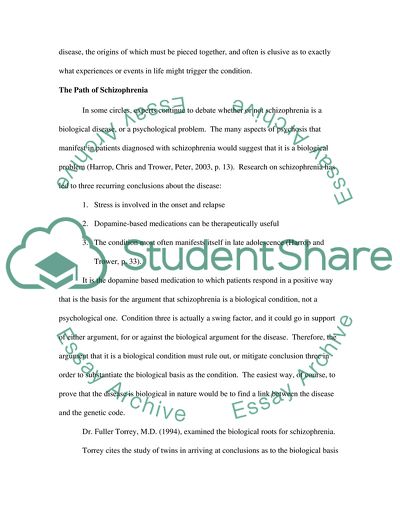Cite this document
(The Condition of Schizophrenia Essay Example | Topics and Well Written Essays - 1750 words, n.d.)
The Condition of Schizophrenia Essay Example | Topics and Well Written Essays - 1750 words. https://studentshare.org/psychology/1718789-psychology-research-paper
The Condition of Schizophrenia Essay Example | Topics and Well Written Essays - 1750 words. https://studentshare.org/psychology/1718789-psychology-research-paper
(The Condition of Schizophrenia Essay Example | Topics and Well Written Essays - 1750 Words)
The Condition of Schizophrenia Essay Example | Topics and Well Written Essays - 1750 Words. https://studentshare.org/psychology/1718789-psychology-research-paper.
The Condition of Schizophrenia Essay Example | Topics and Well Written Essays - 1750 Words. https://studentshare.org/psychology/1718789-psychology-research-paper.
“The Condition of Schizophrenia Essay Example | Topics and Well Written Essays - 1750 Words”. https://studentshare.org/psychology/1718789-psychology-research-paper.


